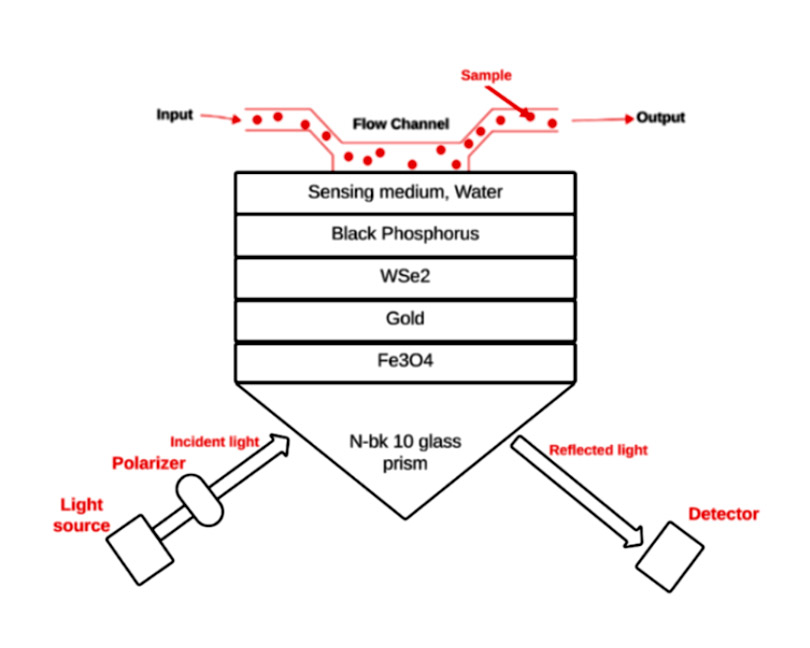A surface plasmon resonance biosensor for bacteria and virus detection: A Comsol Multiphysics simulation
- 1 Department of Electrical and Electronics Engineering, Eastern Mediterranean University, Famagusta, via Mersin 10, Türkiye
Abstract
This study provides a comprehensive simulation-based investigation into the design and performance optimization of a surface plasmon resonance (SPR) biosensor. The main goal of this study is to improve sensitivity and accuracy by combining optical and colorimetric biosensing techniques. The biosensor is studied, examined, and simulated using Comsol Multiphysics. Sensing medium, black phosphorus, tungsten diselenide (WSe2), gold (Au), magnetite (Fe3O4), and N-BK7 glass as prism are the layers that make up the structure of the proposed sensor. The study evaluates various parameters such as electric potential distribution, surface temperatures, conductive heat flux, eigenfrequency, electric field norm, and temperature gradients. The use of WSe2 aims for a higher sensitivity for detecting biomolecules. This paper proves the effect of using Fe3O4 and WSe2 among the six layers of the sensor in increasing the selectivity and sensitivity of the SPR biosensor. The findings reveal intricate interactions between the biosensor layers, which influence its thermal and electromagnetic behavior. The findings of this study contribute to the advancement of SPR biosensor technology, which has the potential for a variety of applications in the biomedical field.
Downloads
References

Copyright (c) 2024 Loujayn Ayache, Kiana Mahtabi Nourani, Shahla Azizi

This work is licensed under a Creative Commons Attribution 4.0 International License.
Copyright
Authors are the copyright holders of their published papers in Synthesis and Sintering, which are simultaneously licensed under a Creative Commons Attribution 4.0 International License. The full details of the license are available at https://creativecommons.org/licenses/by/4.0/.
All papers published open access will be immediately and permanently free for everyone to read, download, copy, distribute, print, search, link to the full-text of papers, crawl them for indexing, pass them as data to software, or use them for any other lawful purpose without any registration obstacles or subscription fees.












